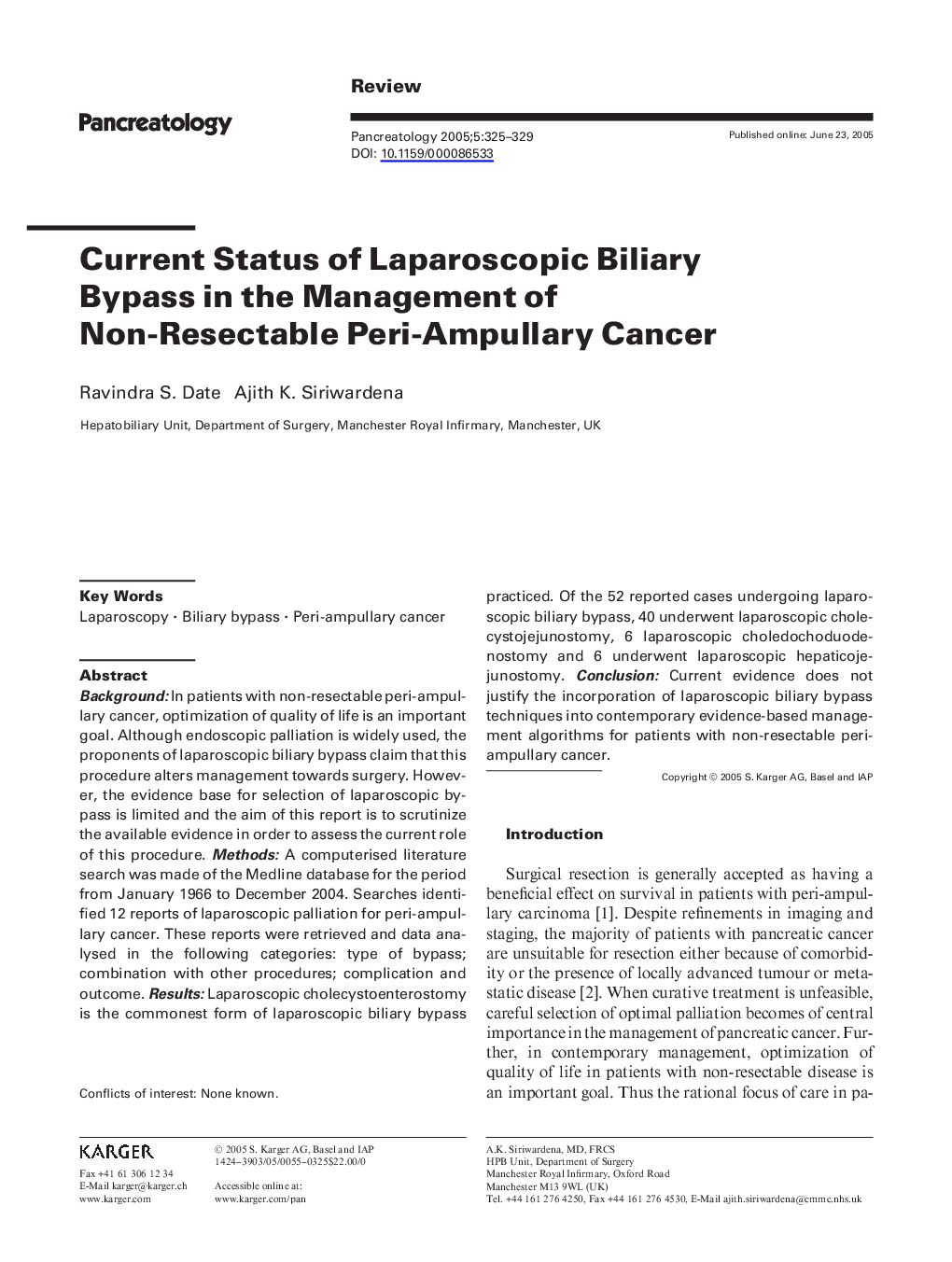| Article ID | Journal | Published Year | Pages | File Type |
|---|---|---|---|---|
| 9256123 | Pancreatology | 2005 | 5 Pages |
Abstract
Background: In patients with non-resectable peri-ampullary cancer, optimization of quality of life is an important goal. Although endoscopic palliation is widely used, the proponents of laparoscopic biliary bypass claim that this procedure alters management towards surgery. However, the evidence base for selection of laparoscopic bypass is limited and the aim of this report is to scrutinize the available evidence in order to assess the current role of this procedure. Methods: A computerised literature search was made of the Medline database for the period from January 1966 to December 2004. Searches identified 12 reports of laparoscopic palliation for peri-ampul-lary cancer. These reports were retrieved and data analysed in the following categories: type of bypass; combination with other procedures; complication and outcome. Results: Laparoscopic cholecystoenterostomy is the commonest form of laparoscopic biliary bypass practiced. Of the 52 reported cases undergoing laparoscopic biliary bypass, 40 underwent laparoscopic cholecystojejunostomy, 6 laparoscopic choledochoduode-nostomy and 6 underwent laparoscopic hepaticoje-junostomy. Conclusion: Current evidence does not justify the incorporation of laparoscopic biliary bypass techniques into contemporary evidence-based management algorithms for patients with non-resectable periampullary cancer.
Keywords
Related Topics
Health Sciences
Medicine and Dentistry
Gastroenterology
Authors
Ravindra S. Date, Ajith K. Siriwardena,
